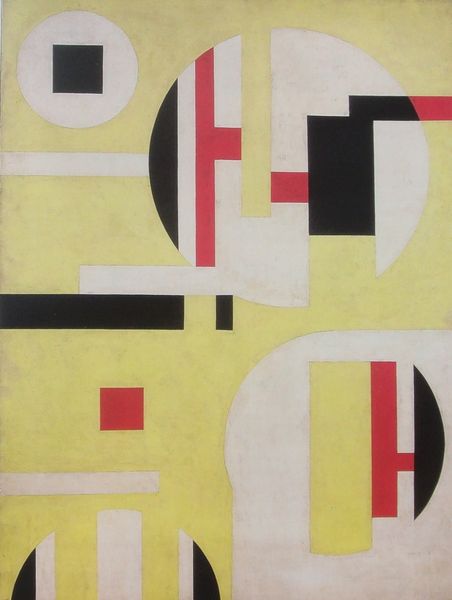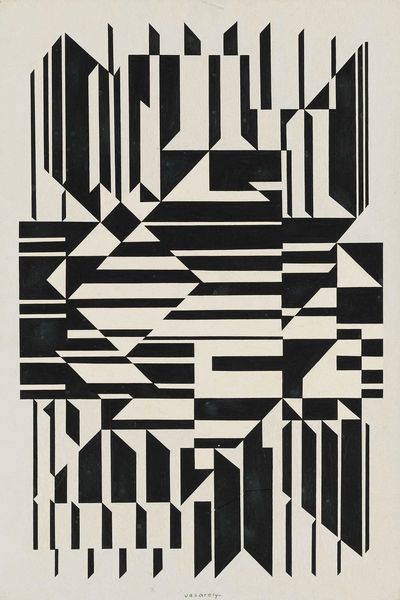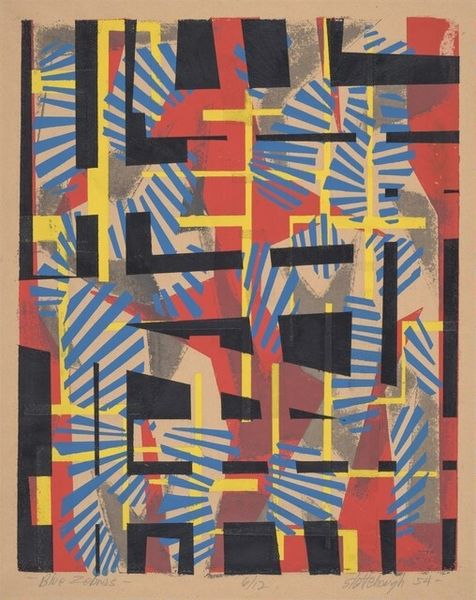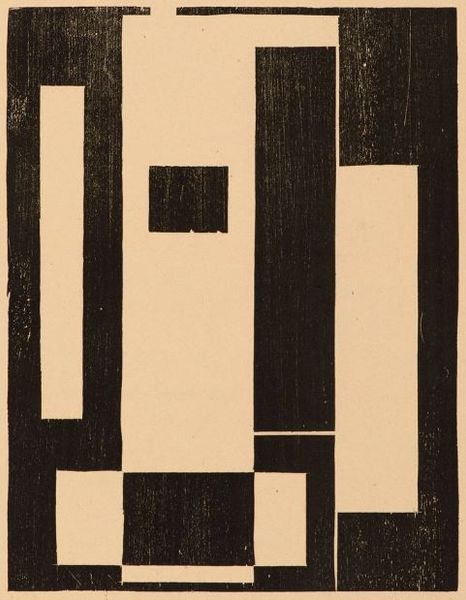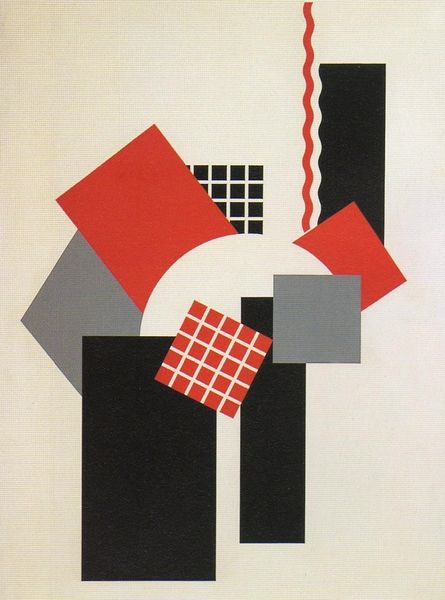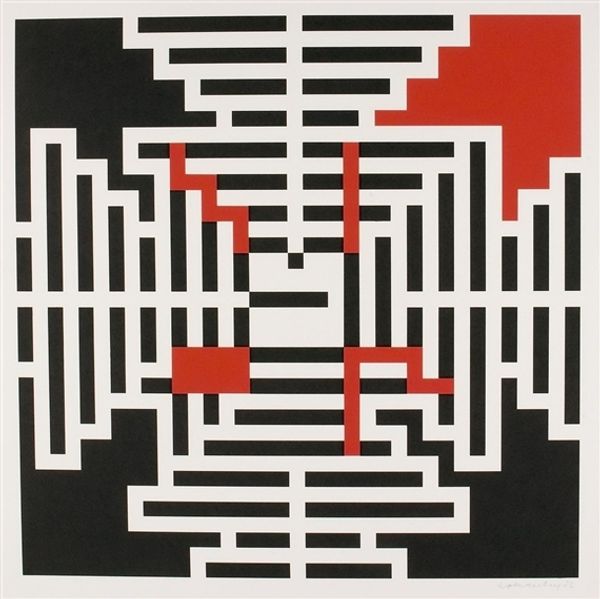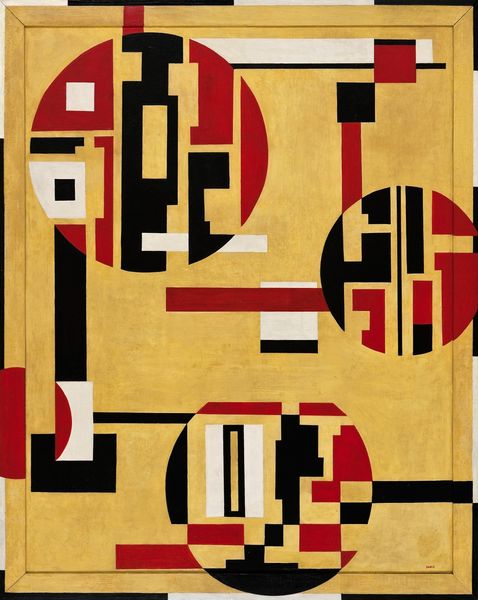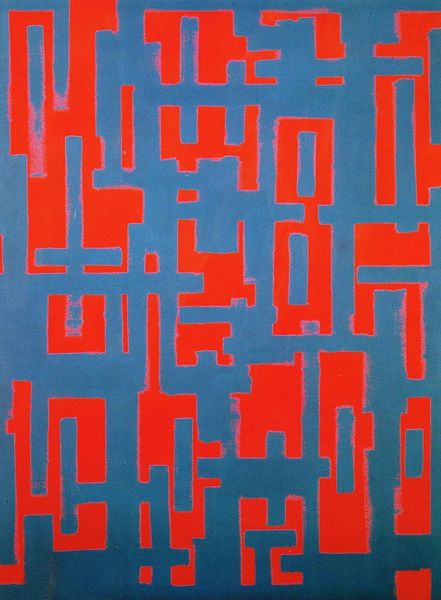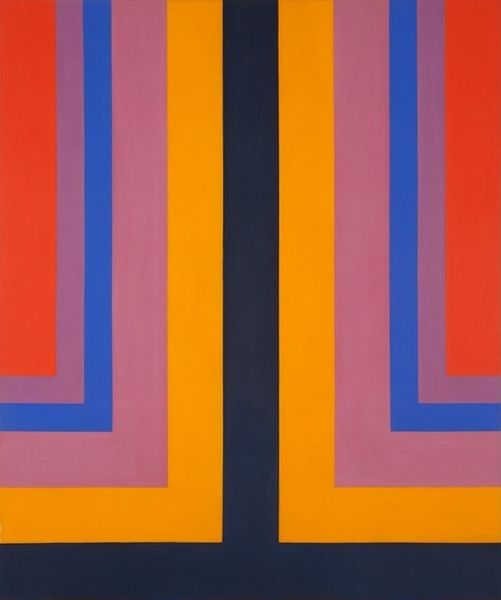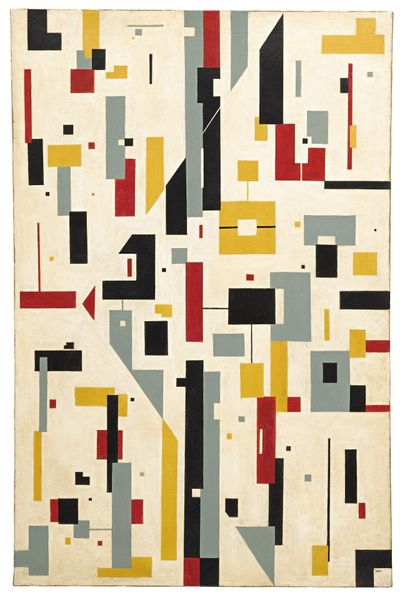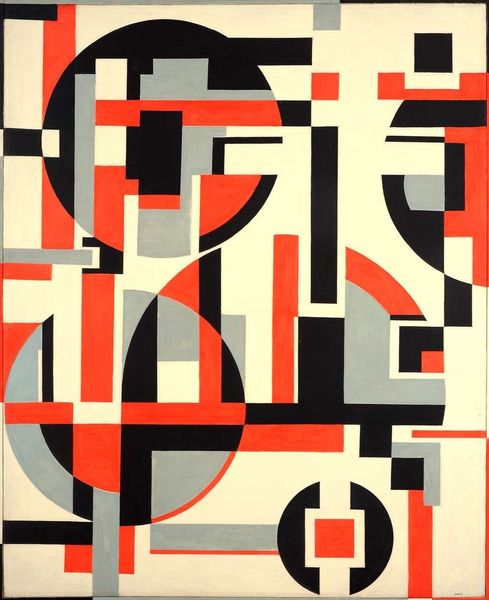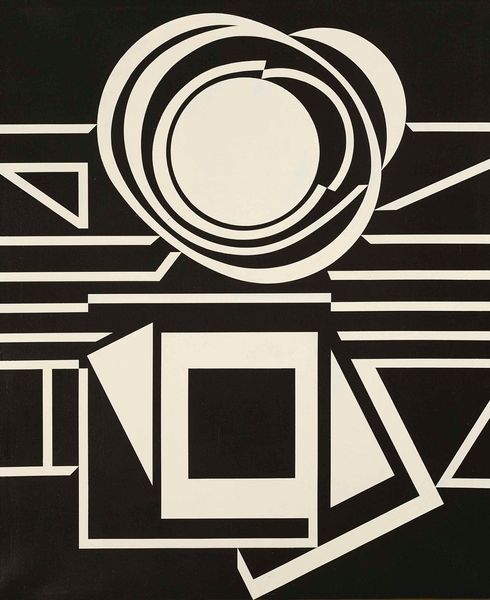
painting
#
de-stijl
#
painting
#
op art
#
constructivism
#
geometric pattern
#
abstract pattern
#
geometric
#
vertical pattern
#
abstraction
#
line
#
modernism
#
hard-edge-painting
Copyright: Public domain US
Curator: Erich Buchholz’s "Untitled," created around 1920, is a compelling example of early 20th-century abstract painting, closely associated with De Stijl and Constructivism. Editor: The striking contrast of the red and black geometric shapes really grabs you, doesn't it? There is something inherently architectural in its composition. The work seems to hum with a raw, almost industrial energy, though made of paint, its as sharp as iron. Curator: Absolutely. It's important to view this work through the lens of its time. Post-World War I Europe was grappling with reconstruction, both physically and socially. The bold, uncompromising geometry of artists like Buchholz resonated with the desire for a new, rational order. These simplified shapes, these strong lines – they reject ornamentation for functionality, and thus reflect a revolutionary sensibility towards structure and order. Editor: I wonder, thinking about the process of its creation, what sort of materials would Buchholz have employed, working as he was in the Weimar Republic with attendant limitations on material supply. Was it a readily available oil-based enamel, swiftly applied in broad brushstrokes or with tools such as scrapers or even rollers? Because how its actually built deeply affects its social power. Curator: The context of the Weimar Republic, indeed, brings forward a key point about the production conditions affecting not only material choice but artistic intentions themselves. De Stijl and Constructivism often embraced industrial materials and techniques as a means to democratize art – to make it accessible and relevant to everyday life. By choosing abstraction, Buchholz and his peers sought to create a universal visual language free from nationalistic or class-based associations. Editor: That’s compelling. Viewing the social function of “art for the people”, one has to acknowledge a bit of tension implicit within these avowals. After all, even supposedly universal visual languages require cultural coding to be 'read'. Can abstract painting of this type successfully claim universality? Curator: Precisely, this gets right to the complicated core of artistic intention. Was the project fully attainable, viewed practically? In interrogating the relationship between artistic output and social consumption, we reveal that "art for the people" is indeed caught within inherent tension between intention, labor, access, and understanding. Editor: Looking at the work once more, the colors pop a bit more, the organization takes shape more vividly now. It's like a diagram for something never constructed. Curator: And I am again impressed at how works like these attempted to negotiate a role for art in a changing world.
Comments
No comments
Be the first to comment and join the conversation on the ultimate creative platform.

